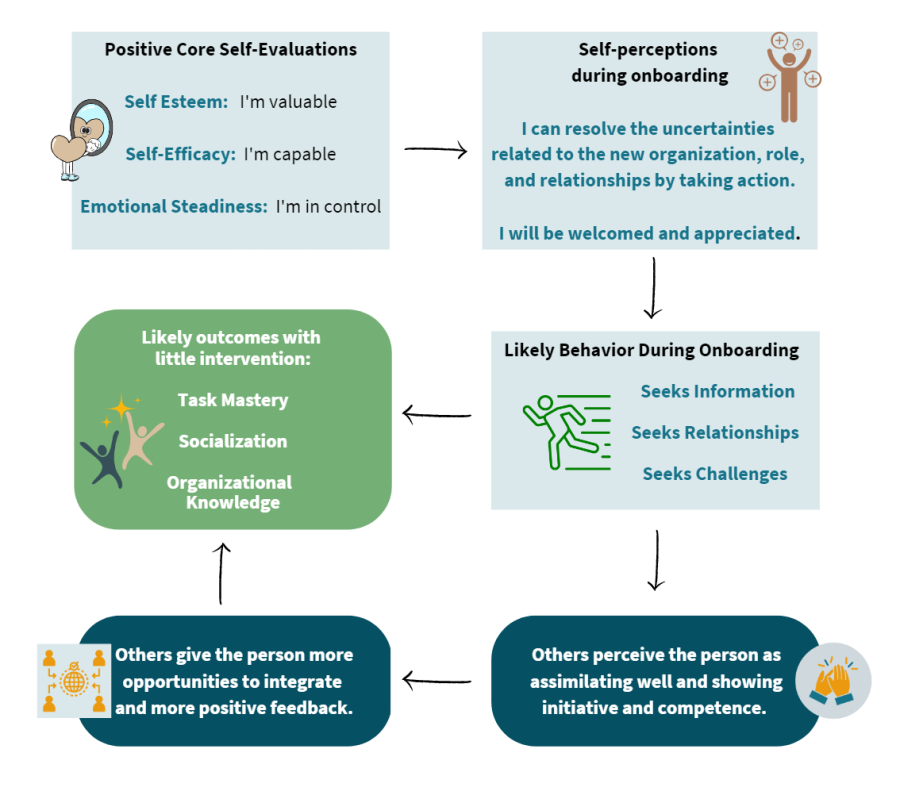Onboarding is receiving more attention due to the rise in employee turnover rates and increased focus on the employee experience. We’ve come a long way since the days when onboarding consisted of signing new hire paperwork, showing you to your desk, and getting your phone system set up. Organizations are recognizing the multiple benefits of a comprehensive and structured onboarding process that spans the first 6 to 12 months, including increased productivity, better organizational commitment and cultural alignment, and longer tenures.
Breaking the onboarding process into standard and personalized components is an emerging trend. If you google “onboarding”, you will find a slew of sites offering best practices and tips for ways to personalize based on the new employee’s preferences. A challenge with this approach is that it can be difficult to do this at scale. So, there is still an element of standardization – everyone is given the same opportunities to personalize the experience in the same ways. As I/O practitioners, we set out to find what research has been done in the field of psychology that may allow us to go one step further in personalizing the experience based on individual differences.
What the Research Says
The focus of this article is on the body of research showing the relationship between an individual’s Core Self-Evaluations (SCE) and onboarding outcomes. The results of those studies were translated to the below graphic.

The primary implication of this research is:
- People who have high CSEs need less support during onboarding because they are more comfortable with the ambiguity, more confident in their ability to deal with it, and more likely to take control of the process by being proactive.
- People with low CSEs are less likely to be proactive which, in turn, can cause them to be evaluated negatively by others. To improve onboarding outcomes and build self-confidence in those new hires, you need to be proactive in providing extra support and resources.
Practical Steps to Take Based on this Research
Measure CSE during the hiring process. At PCI, we use a personality test that is based on the Five Factor Model. It provides scores on the 5 domains and the aspects and facets that fall under each. Among those facet scores are measures of one’s Core Self-evaluations.
Consider the whole person. In a perfect world, we would all be perfect, and we would only hire people who meet every criteria we are looking for. But we don’t live in a perfect world and no one is perfect. So, you need to let the data guide your judgment and use the data to facilitate successful onboarding.
If you decide to hire someone with low CSEs, be proactive
in providing additional support. Consider the following:
- Minimize ambiguity. Make sure that the person has a clear understanding of their role, responsibilities, and expectations. Be proactive and transparent in communicating information, as this will ease feelings of worry and anxiety.
- Establish a support system. Introduce the new hire to several people (e.g., peer buddy, mentor, HRBP) that can be resources to them as they navigate through the transition. If you have a Wellness program, share how you are using it and encourage them to explore it. If you don’t have a program, or are not using it yourself, take action. Everyone can benefit from a Wellness program!
- Frequent check-ins: Create more touch points to ask for feedback on the onboarding process, answer questions and provide any needed direction and support.
- Match initial tasks to their strengths. If you’ve done a pre-hire assessment, use those results to identify strengths that can be leveraged early on. Talk to the person about what tasks they feel most confident in doing, and let them work on those things to give them some quick wins.
- Foster belonging. Facilitate informal activities to help the team bond. Make sure the new hire is aware of any Employee Resource Groups you may have and other opportunities to become a part of teams outside of the immediate work group.
- Provide developmental coaching. Coaching aimed at new skill development can help the new hire gain confidence. Ask the new hire what skills they would like to learn that related to their role and co-create a plan for how to develop that skill. Give the person opportunities to apply the skill on the job and provide balanced feedback to support their growth and motivation.
In sum, by providing extra support to people who have low Core Self-evaluations, you can facilitate successful onboarding while helping the new hire gain confidence and a sense of belonging.
Citations
Fang, R., McAllister, D.J, & Duffy, M (2017). Down but not out: Newcomers can compensate for low vertical access with strong horizontal ties and favorable core self‐evaluations. Personnel Psychology (70), 517-555.
Cheng, S., Costantini, A., Zhou, H. & Wang, H (2022). A self-enhancement perspective on organizational socialization: Newcomer core self-evaluations, job crafting, and the role of leaders” developmental coaching. European Journal of Work and Organizational Psychology, 31(6), 908-921.